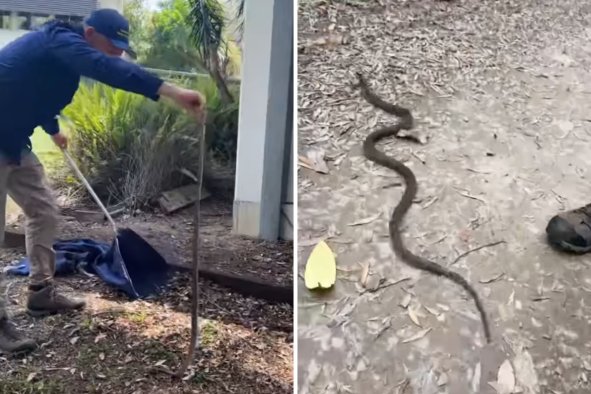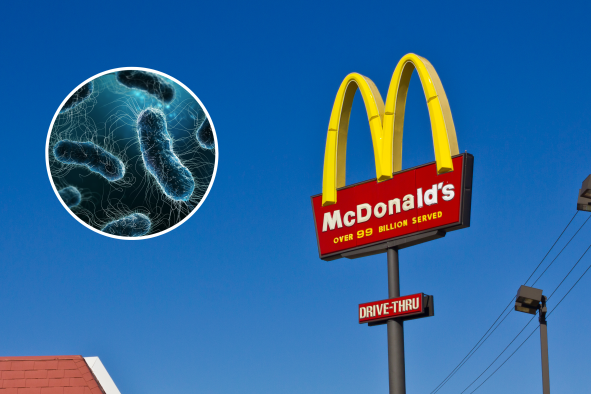A "black hole triple" system has been discovered for the first time, scientists announced.
Black holes have only been spotted on their own or in a binary until this discovery, with a single star, neutron star or other black hole companion orbiting tightly around them.
Now, according to a new paper in the journal Nature, the black hole V404 Cygnus has two stars orbiting around it at varying distances.
This first-of-its-kind discovery could help unravel the mysteries of how black holes form and how they enter into binaries or triples, researchers said.
V404 Cygnus is some 8,000 light years from Earth and has been long known to be in process of eating a star orbiting very tightly around it, whipping around the black hole once every 6.5 days.
In this new paper, astronomers describe how they discovered a second star in the system, orbiting the black hole at a much greater distance, taking 70,000 years to complete one full orbit. The second star is about 3,500 times farther away from the black hole than Earth is from the sun, or about 100 times the distance between the sun and Pluto.
"The fact that we can see two separate stars over this much distance actually means that the stars have to be really very far apart," study co-author Kevin Burdge, a researcher at the MIT Department of Physics, said in a statement.
"It's almost certainly not a coincidence or accident. We're seeing two stars that are following each other because they're attached by this weak string of gravity. So this has to be a triple system."
The fact that this black hole still has a gravitational grip on the second star despite its incredibly distant orbit has interesting implications for how V404 Cygnus formed.
Black holes are generally thought to form via the collapse of a massive star during a supernova, but this would result in a major wave of energy known as a "natal kick," which would be expected to fling out any other objects in its vicinity.
"Imagine you're pulling a kite, and instead of a strong string, you're pulling with a spider web," Burdge said. "If you tugged too hard, the web would break and you'd lose the kite. Gravity is like this barely bound string that's really weak, and if you do anything dramatic to the inner binary, you're going to lose the outer star."
The presence of the second star indicates that perhaps this black hole didn't have as strong of a natal kick as expected. The researchers suggested that this could be explained by V404 Cygnus instead having formed via a less explosive process known as "direct collapse" in which a star simply collapses in on itself without the dramatics of a supernova explosion.
"The vast majority of simulations show that the easiest way to make this triple work is through direct collapse," Burdge said.
The discovery also suggests that more black holes in the cosmos could have formed in this less explosive manner, and therefore that there may be more black hole triples lurking in the depths of space.
"We think most black holes form from violent explosions of stars, but this discovery helps call that into question," Burdge said. "This system is super exciting for black hole evolution, and it also raises questions of whether there are more triples out there."
The researchers were also able to figure out the age of the black hole system and determined that the triple was about 4 billion years old. This is because the outer star appears to be becoming a red giant, which only occurs in the final stages of a star's life.
"We've never been able to do this before for an old black hole," Burdge said. "Now we know V404 Cygni is part of a triple, it could have formed from direct collapse, and it formed about 4 billion years ago, thanks to this discovery."
Do you have a tip on a science story that Newsweek should be covering? Do you have a question about black holes? Let us know via science@newsweek.com.
References
Burdge, K.B., El-Badry, K., Kara, E. et al. The black hole low-mass X-ray binary V404 Cygni is part of a wide triple. Nature (2024). https://doi.org/10.1038/s41586-024-08120-6
Disclaimer: The copyright of this article belongs to the original author. Reposting this article is solely for the purpose of information dissemination and does not constitute any investment advice. If there is any infringement, please contact us immediately. We will make corrections or deletions as necessary. Thank you.



